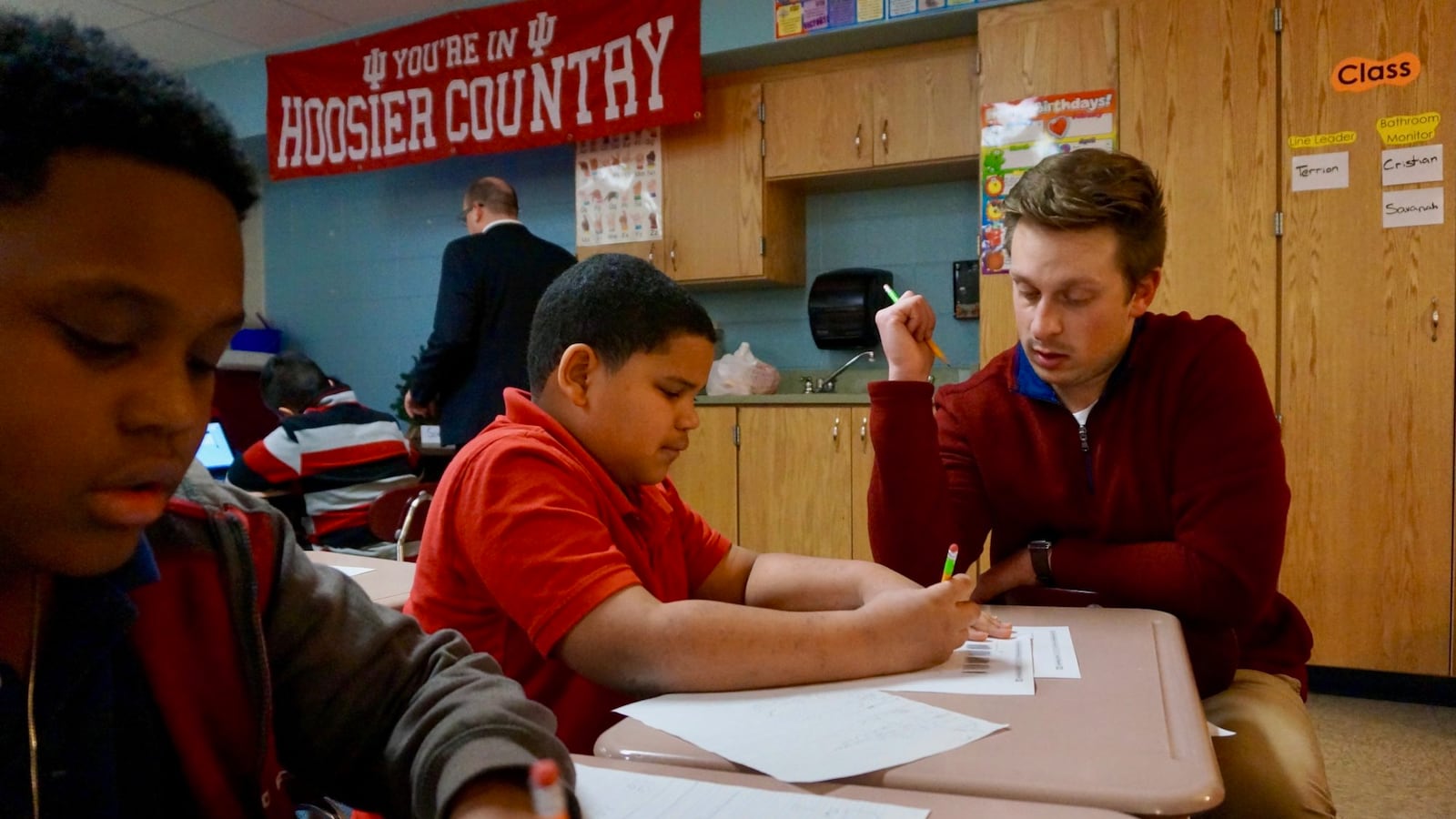A-F grades for schools across Indiana were released Wednesday, but in the state’s largest district, the grades aren’t necessarily an easy way to compare schools.
An increasing share of Indianapolis Public Schools campuses, last year about 20 percent, are being measured by a different yardstick than others, creating a system where schools with virtually identical results on state tests can receive vastly different letter grades.
The letter grades aim to show how well schools are serving students by measuring both how their students score on state tests and how much their scores improve. But as Chalkbeat reported last year, new schools and schools that join the IPS innovation network can opt to be graded for three years based only on the second measure, known as growth. Schools in the innovation network are part of the district, but they are run by outside charter or nonprofit operators.
Of the 11 out 70 Indianapolis Public Schools campuses that received A marks from the state, eight were graded based on growth alone. They included a school in its first year of operation and seven innovation schools.
At the same time, traditional neighborhood and magnet schools with growth scores as good as or better than the scores at A-rated innovation schools received Bs, Cs, and even Ds.
Of the 13 innovation schools that received grades for last school year, eight received As, two got Bs, two got Cs, and one got a D. Only Herron High School was graded on the same scale as other schools. (For high schools, grades incorporate other measures including graduation rates.)
The result is a system that most parents don’t understand, said Seretha Edwards, a parent of four children at School 43, a school that received a failing grade from the state but would have gotten a B if it were measured by growth alone.
“I just think it’s kind of deceiving,” she added. “I don’t think it paints a fair picture of the schools.”
Indianapolis Public Schools deputy superintendent for academics Aleesia Johnson said the growth scores show schools are on a good trajectory.
“If you see that kids are making progress in terms of growth, that’s a good sign that you’re on the right track,” she said.
Still, she acknowledged that “there’s still a lot of work to do” to get students to pass tests and show proficiency.
Johnson pointed out that often-changing standardized tests and different A-F grades can cause confusion for families, and those measures don’t provide a complete or timely picture for families who want to assess their schools or choose new ones. “I don’t think it gives a lot of valuable information,” she said.
Advocates have said the growth only model makes sense because schools shouldn’t be held accountable for the low passing rates of students that they just began educating. But in practice, the policy benefits charter and innovation schools, which enjoy strong support from Republican lawmakers.
“The concept behind the growth-only model was that we measured newer schools based off of what they are able to do for their students, rather than taking them where they received them,” said Maggie Paino, the director of accountability for the education department. “You’re taking strides to get toward proficiency.”
The situation is even more muddled than usual this year. Schools across the state received two letter grades. One was calculated under a state model that relies largely on test scores, and the other was determined under a plan the state uses to comply with federal standards.
In addition to helping parents choose schools, years of repeated low letter grades from the state can trigger intervention or takeover. But the state has deferred in decisions about intervening in low-rated schools to IPS in recent years.
Back in 2012, the state took over four chronically low-performing Indianapolis schools. Since Superintendent Lewis Ferebee took over, IPS has taken aggressive steps to overhaul struggling schools by “restarting” them as innovation schools with new managers. Other struggling schools have been closed.
School 63, which received its sixth consecutive F from the state, might have faced state intervention in the past. But the school is unlikely to face repercussions because IPS restarted the school by turning it over to an outside manager. The Haughville elementary school is now managed by Matchbook Learning.
Shaina Cavazos and Stephanie Wang contributed reporting.

